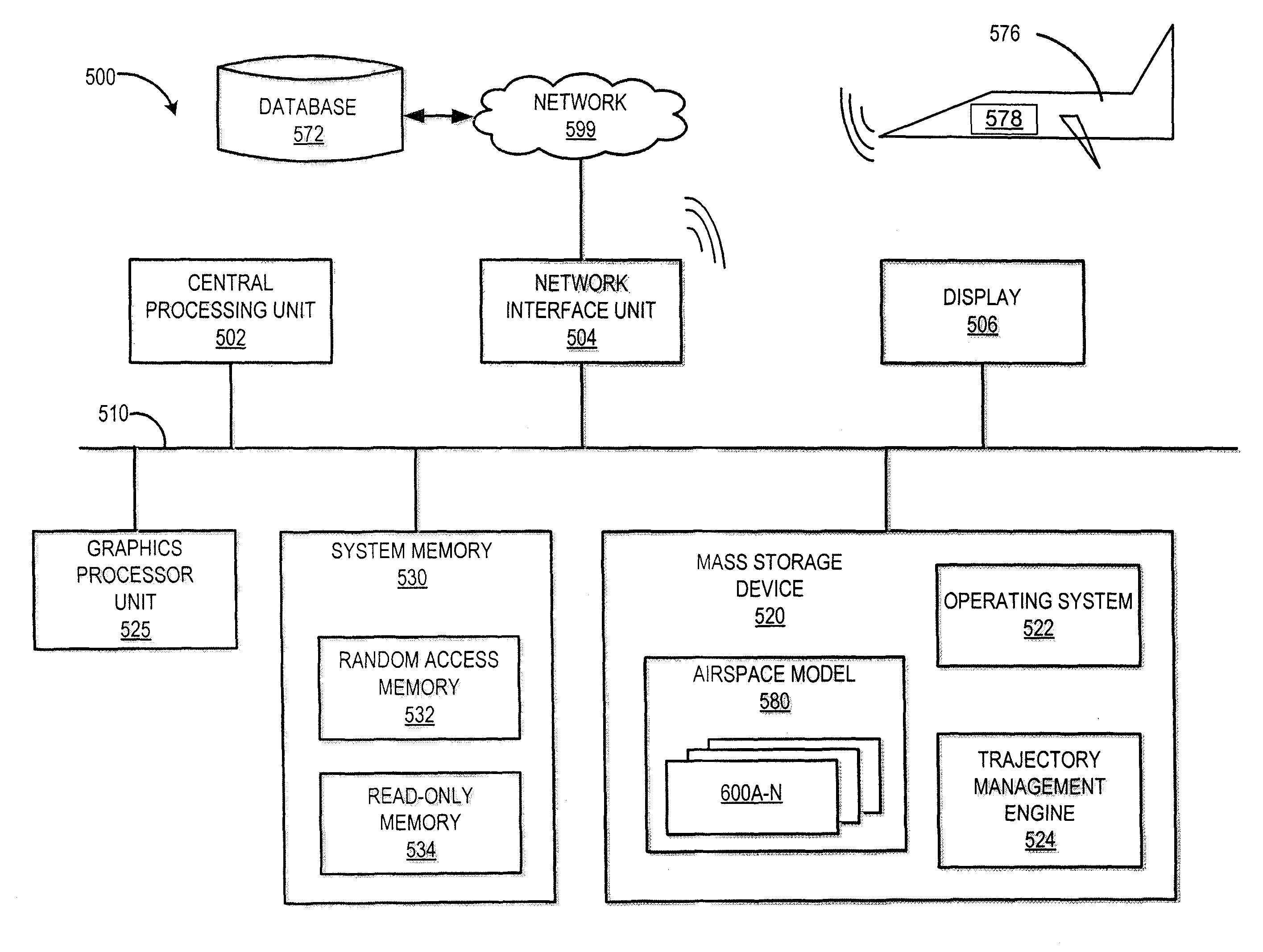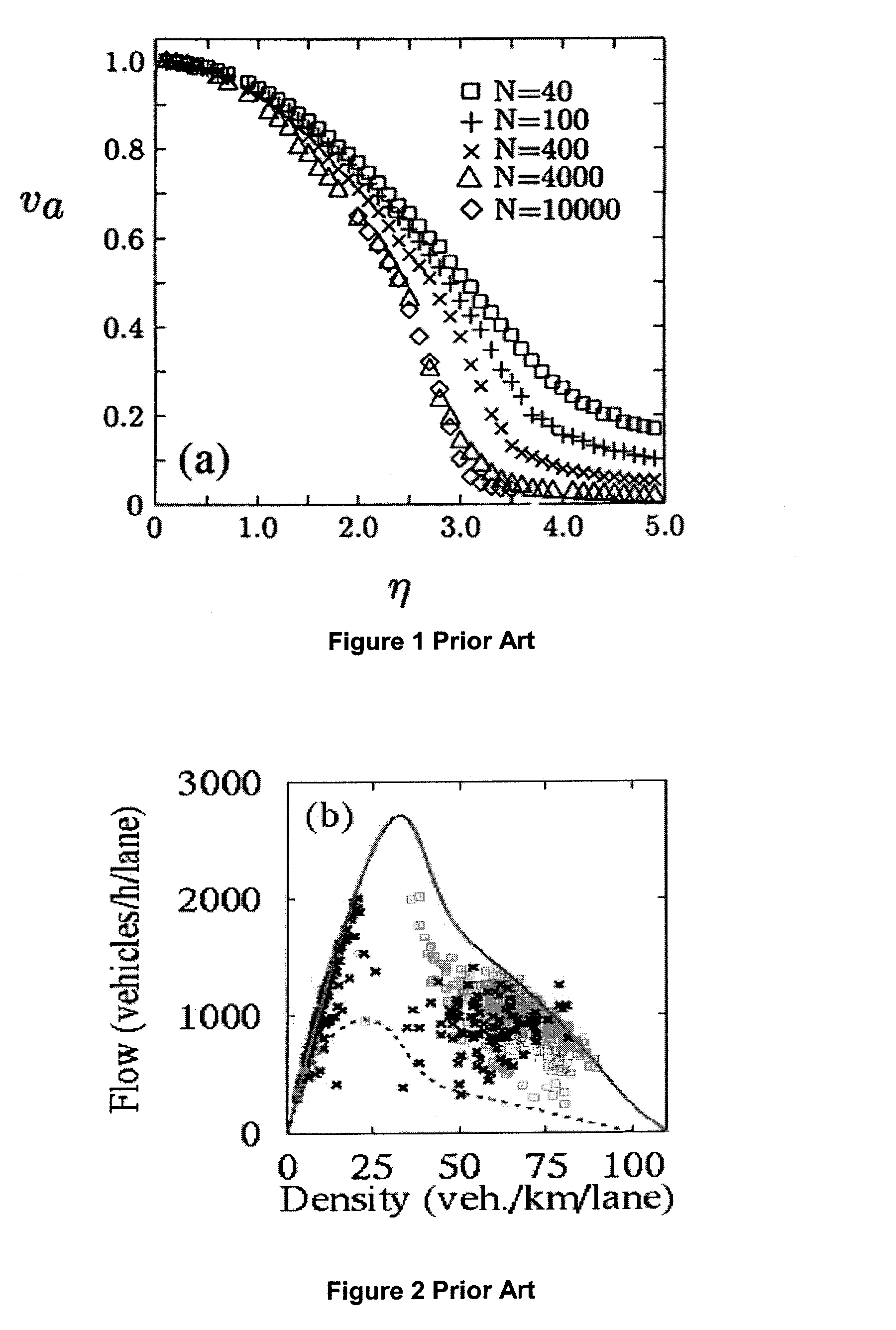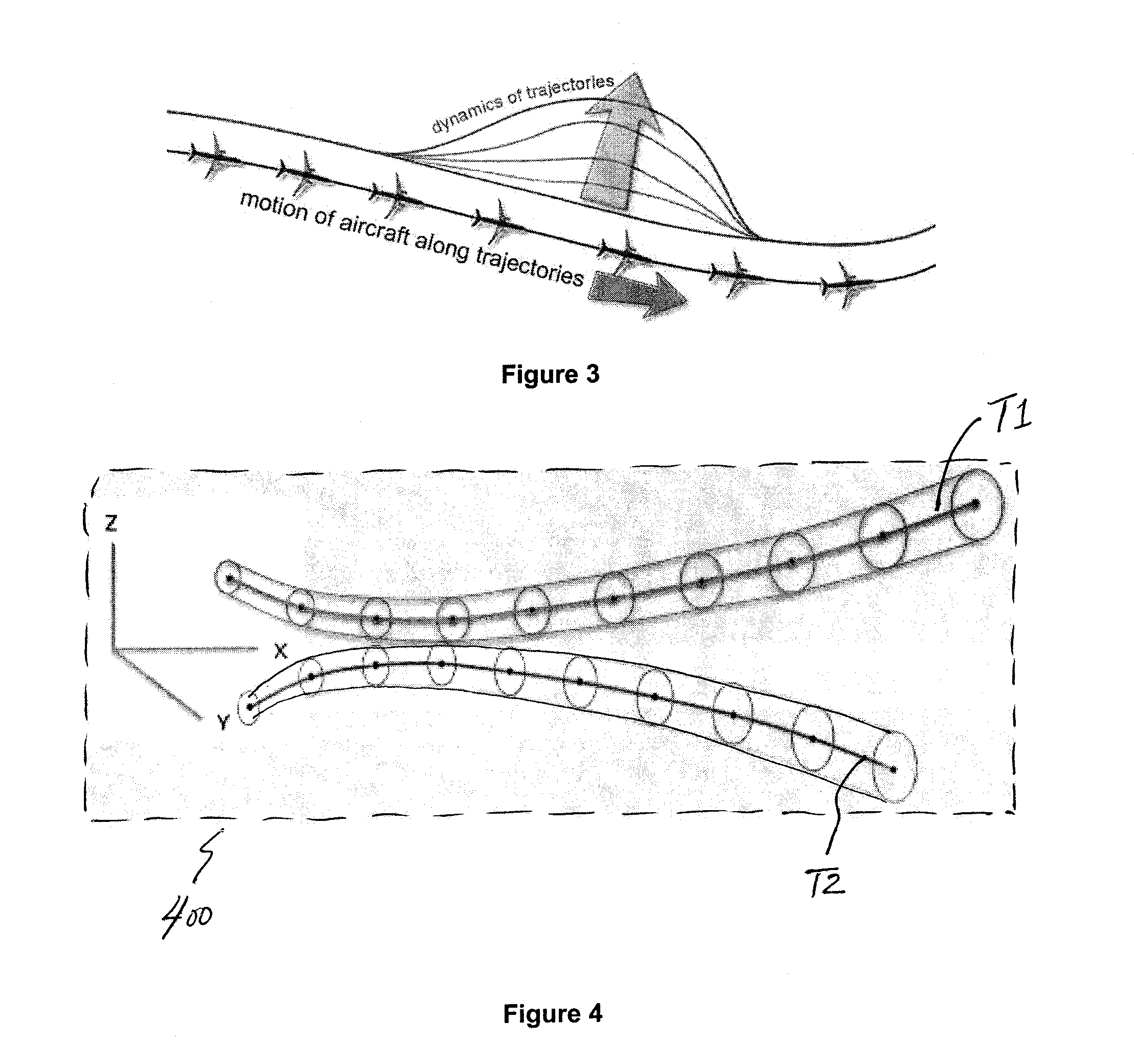System and method for planning, disruption management, and optimization of networked, scheduled or on-demand air transport fleet trajectory operations
a fleet trajectory and air traffic technology, applied in the field of system and technology for controlling and monitoring air traffic within an airspace, can solve problems such as requiring continuous replanning, forcing others to re-plan, and ripple through the system, so as to reduce fuel burn, reduce fuel consumption, and maintain a population
- Summary
- Abstract
- Description
- Claims
- Application Information
AI Technical Summary
Benefits of technology
Problems solved by technology
Method used
Image
Examples
Embodiment Construction
[0070]
LIST OF ABBREVIATIONS AND ACRONYMS3SATThe Satisfiability Construct for all NP-hard problems4DTFour Dimensional Trajectories5DTFive Dimensional TrajectoriesABMAgent-Based ModelingANSPAir Navigation Service ProviderAOCAirline Operations CenterATMAir Traffic ManagementATOPAdvanced Technologies & Oceanic Procedures (FAA Ocean 21 Prog.)ATSPAir Transportation Service ProviderCUDACompute Unified Device ArchitectureDARPDynamic Airspace Reroute ProgramDCITData Communications Implementation Team (FAA)FANSFuture Air Navigation SystemFMCFlight Management ComputerJPDOJoint Planning and Development OfficeNextGenNext Generation Air Transportation SystemNASNational Airspace SystemPBCPerformance-Based CommunicationPBNPerformance-Based NavigationPBSPerformance-Based SurveillanceRBTReference Business TrajectoryRNPRequired Navigation PerformanceRTPRequired Time PerformanceRVSMReduced Vertical Separation MinimumsSAASense and AvoidSESARSingle European Sky Advanced ResearchTBOTrajectory-Based Operat...
PUM
 Login to View More
Login to View More Abstract
Description
Claims
Application Information
 Login to View More
Login to View More - R&D
- Intellectual Property
- Life Sciences
- Materials
- Tech Scout
- Unparalleled Data Quality
- Higher Quality Content
- 60% Fewer Hallucinations
Browse by: Latest US Patents, China's latest patents, Technical Efficacy Thesaurus, Application Domain, Technology Topic, Popular Technical Reports.
© 2025 PatSnap. All rights reserved.Legal|Privacy policy|Modern Slavery Act Transparency Statement|Sitemap|About US| Contact US: help@patsnap.com



